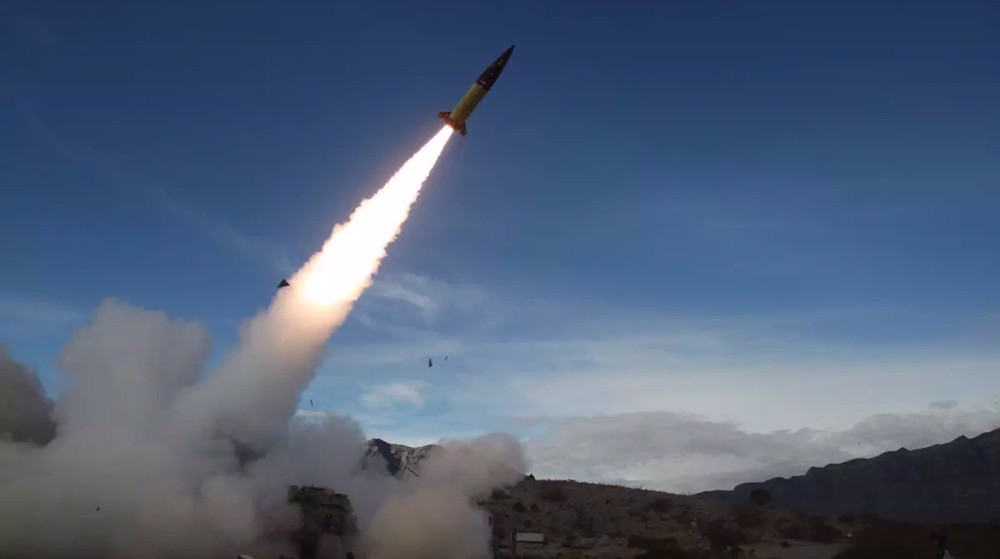US Navy test fires 4 submarine-launched ballistic missiles amid Russia tensions
The United States military has test fired four submarine-launched ballistic missiles (SLBMs), amid an emerging arms race with Russia.
The US Navy’s Ohio class ballistic missile submarine USS Nebraska launched the unarmed Trident II nuclear missiles in the space of three days this week, according to a report by the website The Drive.
The test was significant because the Navy tested four missiles while usually it only tests one or two SLBMs in routine tests to make sure the missiles and their operating forces remain combat ready, the report stated.
The USS Nebraska fired two of the missiles on September 4 and the other two on September 6 from an unspecified location off the coast of Southern California.
The US military did not disclose the designated target of the launch either but according to the report, government warning notices to aircraft and ships showed that they fell somewhere in the Pacific Ocean north of Hawaii or near Guam.
"These test flights were part of a Commander Evaluation Test (CET) whose primary goal was to validate performance expectations of the life-extended Trident II (D5) strategic weapon system," the US Navy said in a press release. "CETs and other flight tests are conducted on a recurring, scheduled basis to evaluate and ensure the continued reliability and accuracy of the system."
The tests came as the US military was getting prepared to field an improved version of the Trident II missiles, which would be armed with the lower-yield W76-2 warheads.
The USS Nebraska received the first series of improved Trident missiles in 2013. Dubbed D5 Life Extension, the missiles have improved range and electronics and would remain in service until 2040s, the report said.
The newer Trident missiles, called D5LE2, will reportedly stay in service for four more decades, said US Navy Vice Admiral Johnny Wolfe, head of the Navy's Strategic Systems Programs office.
"The nuclear deterrence mission is the Department of Defense's No. 1 priority, and for the US Navy that means not only maintaining our current capability, but also developing the next generation of Trident missiles and shipboard strategic weapon system that will ensure a credible sea-based deterrent for the next 40 years and beyond," he said in a statement.
The W76-2 warheads are the kind of tactical nuclear weapons that US President Donald Trump’s administration said in its Nuclear Posture Review last year it would need to counter Russia with.
The warheads, which are said to be more accurate with less destructive effect, entered production in January and were expected to be delivered to the Pentagon by the end of 2019.
This is part of the US government estimate that plans for modernizing and maintaining the country’s nuclear arsenal will cost nearly $500 billion over the next decade.
The NPR specifically names Russia as the main threat for the US and calls for preparation to counter Moscow’s growing military might.
When in 2017 the US military test-dropped another type of new warheads, Russia warned that such new tactical weapons unlocked “dangerous potentials.”
The new tests are also expected to draw a response from Russia.
Back in August, Russian President Vladimir Putin ordered a “symmetric” response to the US military’s test-launch of a ground-launched cruise missile which he said could pose a threat to Moscow’s security.
The American missile has a range of more than 500 Kilometers and would have been banned under the Intermediate-range Nuclear Forces (INF) Treaty, which was abandoned by both the US and Russia in August.
The INF treaty had been signed in 1987, banning land-based missiles with ranges of between 500 to 5,500 kilometers.
Putin said in August that Washington’s true intentions were to “deploy formerly banned weapons in various regions of the world,” after American officials revealed plans to deploy nuclear weapons in Europe and Asia.
Hezbollah says 2,000 Israeli forces killed, injured in operations since Gaza war began
War of wills: Iran army chief vows crushing response to any aggression
April 24: ‘Axis of Resistance’ operations against Israeli occupation
Tabas sand defeats US military
'US secretly sent long-range ATACMS missiles to Ukraine in recent weeks'
Iran: Awakened world public opinion determined to stop Israel war crimes
US House speaker wants National Guard to quell pro-Palestine student protests
Iran, Russia sign MoU to strengthen security cooperation


















 This makes it easy to access the Press TV website
This makes it easy to access the Press TV website